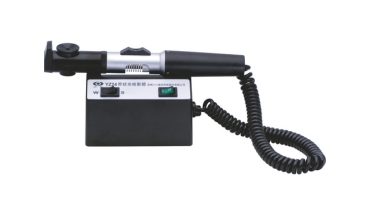Synoptophore
- Binocular design, easy observation
- Double Haidinger brushes to meet different examination needs
- LED light panel illumination
- 20 pairs of standard slides
What is a Synoptophore?
Synoptophores, also known as large amblyopia glasses or strabismus glasses, evolved from Worth amblyopia glasses.
66 Vision synoptophore is a diagnostic and therapeutic ophthalmic device. It is an essential instrument for diagnosing and treating amblyopia and strabismus.
66 Vision synoptophore, designed to check the binocular vision functions of the human eye, such as simultaneous vision, fusion, and stereoscopic vision, and diagnose ophthalmic diseases such as subjective and objective strabismus, abnormal retinal correspondence, latent strabismus, afterimage, and amblyopia.
It is especially suitable for children with hyperopic, myopic, ametropia, anisometropia, and amblyopia patients with abnormal retinal correspondence. It also has a good effect on congenital cataracts, nystagmus, and amblyopia caused by trauma.
Specification
- Technical Data
| Magnifications | 1.65X |
| Diameter of field | ≥56mm |
| Pupil adjustable range | 45~75mm |
| Red light | 𝛌=640mm flashing system |
| Each lens rotating horizontally | Converging 50°, diverging 40° |
| Each lens rotating vertically | ±30° |
| Slides moving up and down range | ±10△ |
| Flashing form | Manual/Automatic |
| Automatic flashing frequency | Ten-step, 30~300 times/minute |
| Automatic flashing alternation mode | ¼ on ¾ off ½ on ½ off ¾ on ¼ off |
| Darkroom illumination | LED bulb with symmetry design |
| Adjustable Haidinger brush | 50~100 round/minute |
| Power Supply | AC110V/22V ±10%, 50Hz/60Hz |
| Power consumption | 40VA |
Features of 66 Vision Synoptophore

Binocular design, easy observation
The semi-transparent and semi-reflective mirror allows doctors to observe the patient’s eye position and eye movement, thereby accurately evaluating the patient’s eye function.
Double Haidinger Brushes to Meet Different Examination Needs
Double Haidinger brushes rotate 50 to 100 rounds per minute, suitable for training and treatment of paracentral fixation and abnormal retinal correspondence.


LED Light Panel Illumination
LED bulb with symmetry design allows more convenient operation.
20 Pairs Standard Slides
Equipped with three-level vision function, K angle, afterimage, Haidinger brush training, and random dot slides; optional slides for quantitative measuring of solid acutance are available(40”~1000″)

Aluminium Slides Case











